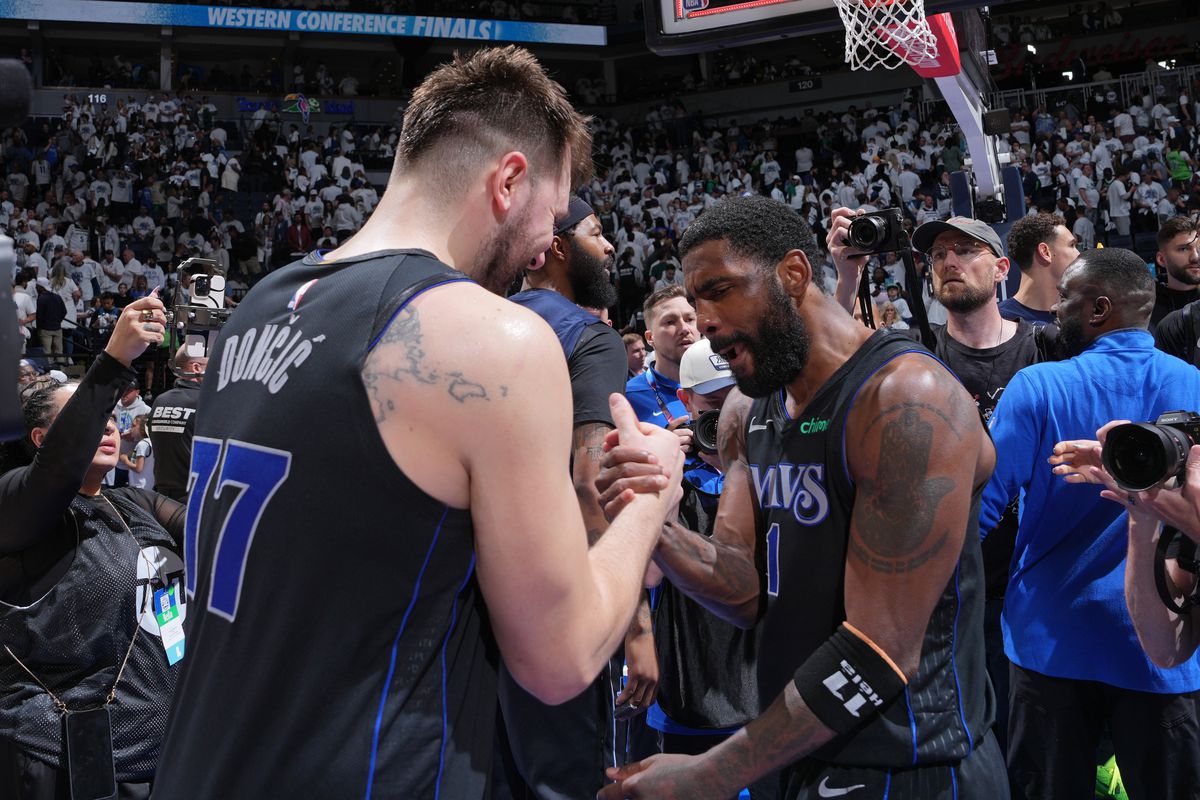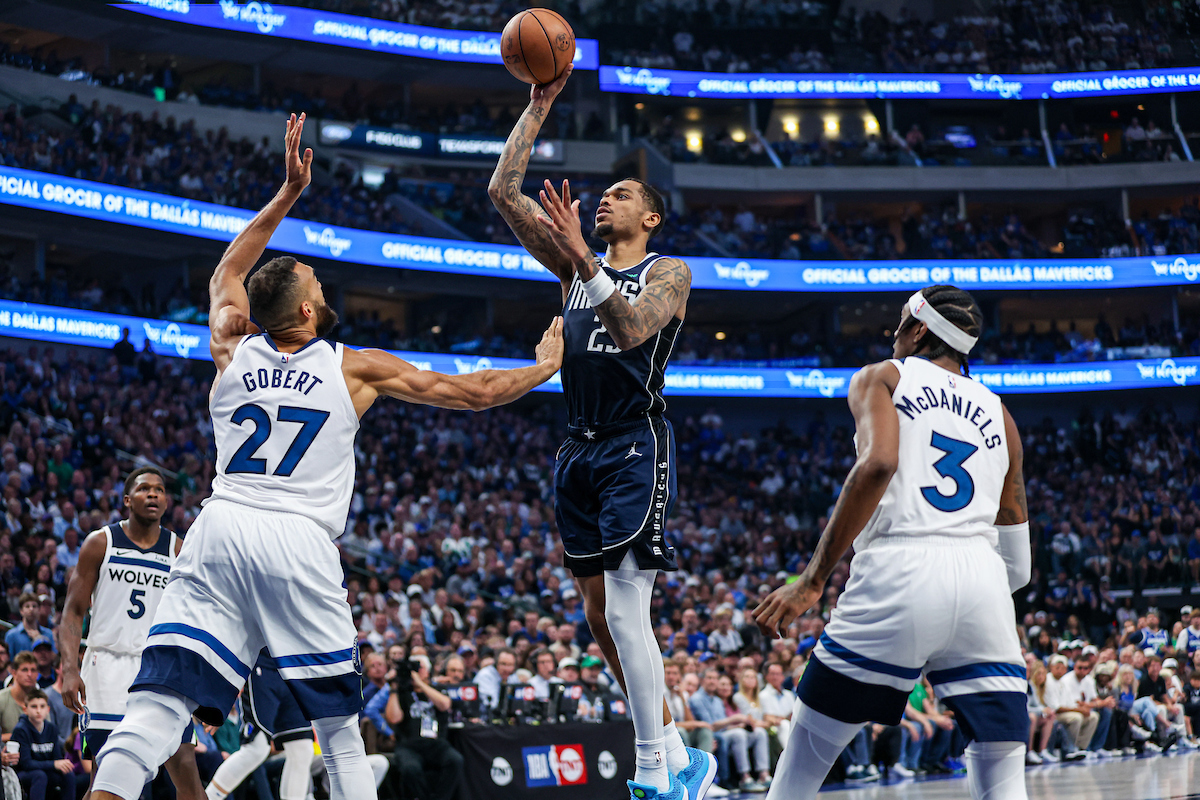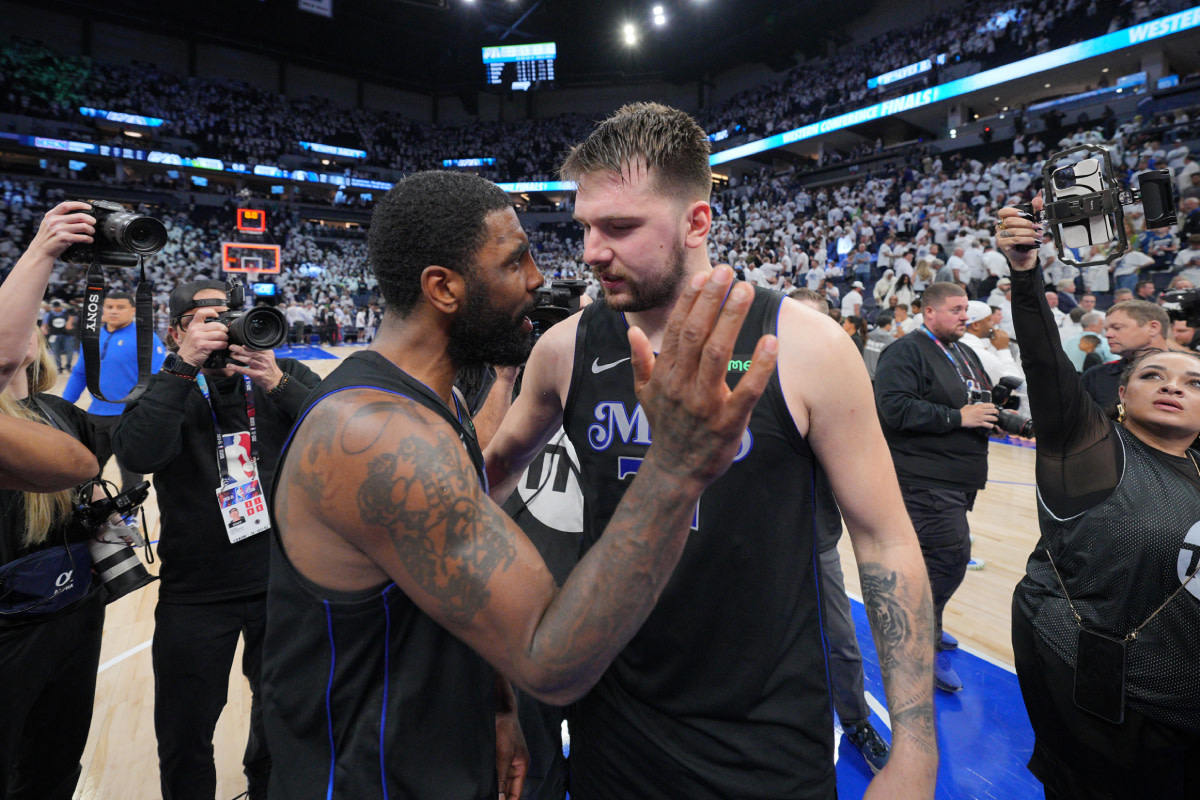The Dallas Mavericks claimed a crucial victory in Game 1 of the Western Conference Finals, overcoming the Minnesota Timberwolves with a 108-105 win. This victory, spearheaded by Dallas’ superstar duo, allows the Mavs to steal home-court advantage and sets the tone for a compelling series. Let’s delve into three pivotal plays that stood out in this tightly contested game.

Mavs Exploit Wolves’ Defensive Schemes
The Timberwolves boasted the league’s top defense this season, largely due to their exceptional ability to protect the paint. With four-time Kia Defensive Player of the Year Rudy Gobert anchoring the middle, Minnesota held opponents to a league-low 53.4% shooting in the paint.
However, the Dallas Mavericks turned this strength into a vulnerability by scoring 62 points in the paint, shooting an impressive 63% (31-for-49).
Irving’s Quickness in Transition
Transition play becomes vital in the playoffs when half-court defenses tighten up. In Game 1, the Dallas Mavericks outscored the Wolves by eight points (29-21) in transition, a critical factor in their narrow victory. Kyrie Irving was instrumental, contributing 12 of these transition points and maintaining the Mavs’ momentum in the first half.
“In Irving’s first full season in Dallas, the Mavs saw the league’s second-biggest jump in transition points per game,” highlighting his impact on their open-court play.
Gobert’s Drop Coverage and McDaniels’ Defensive Challenge
Rudy Gobert’s drop coverage was a cornerstone of Minnesota’s defense, but Dallas exploited this strategy effectively. In Game 1, the Mavs scored 1.10 points per possession against Gobert’s “soft” coverage, significantly higher than the Wolves’ defensive average in previous rounds.
Jaden McDaniels, tasked with guarding Luka Doncic, found himself struggling to contain the Mavs’ star. “Doncic kept the trailing McDaniels on his hip,” which allowed him to find space for his step-back jumper, a critical move that underscored Dallas’ tactical adjustments.

Defensive Blitz Strategy
When Karl-Anthony Towns took over as the screener’s defender, the Wolves shifted their strategy to blitz the ball-handler. This aggressive approach forced turnovers and disrupted the Dallas Mavericks’ rhythm. Anthony Edwards’ rotation to Daniel Gafford led to a crucial steal and transition bucket for McDaniels, showcasing the potential effectiveness of this defensive scheme.
“Late in the third, Gobert was up at the level of the screen and was able to stay with Doncic’s drive, forcing another turnover,” demonstrating the Wolves’ adaptability.

Looking Ahead: Dallas Mavericks
The Dallas Mavericks‘ ability to exploit Minnesota’s defensive schemes was key to their Game 1 victory. While the Wolves have the tools and talent to make necessary adjustments, Dallas’ versatility and star power pose a significant challenge. As Game 2 approaches, both teams will need to refine their strategies to gain an edge in this intense series.










